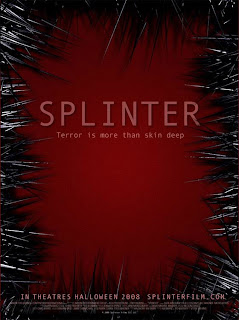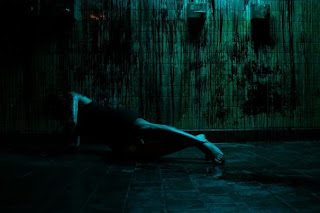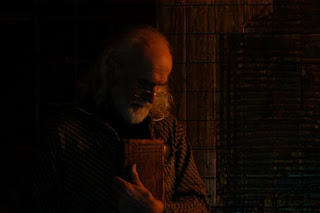
SPLINTER
(Review)
Polly Watt and Seth Belzer (Jill Wagner from TV’s Blade and Everything’s Gone Green’s Paulo Costanzo) are all set for camping, both looking forward to some anniversary sex under the stars. But when the tent defies their romantic intentions, they relent and head for the nearest motel, putting them on a collision course with another couple, and placing them on a path that will bring them to the Sherman gas station, and the gruesome thing that awaits there…

Toby Wilkins’ Splinter is a frisky blast of low budget horror that grabs you from the get-go (with a splendidly-edited opening, courtesy of David Michael Maurer), and introduces us to one of the freakiest cinematic beasties from 2008.
Wisely opting to utilize old school physical effects—by Quantum Creation FX—Wilkins amplifies the suspense and tension of the dire circumstances the film’s characters find themselves in as Splinter unspools.
If this had been some bigger-budgeted Hollywood horror flick, the monster might very well have been achieved with CGI, which is still usually a problematic option, as, a lot of the time, the pixels really don’t display any genuine physical presence. It’s hard to get worked up when the onscreen menace is clearly not having any actual interaction with the cast, as with, say, Francis Lawrence’s I Am Legend.
In Splinter, the creature is most definitely there, banging and scuttling and flailing about with the rest of the flesh-and-blood cast.*

But Splinter is more than just that horrible beast (co-designed by Wilkins); Splinter is also an involving narrative populated by characters with actual dimension, who surprise us with their humanity, and keep us involved by gaining our sympathy (some, more quickly than others).
Here, the headstrong characters occasionally show their vulnerability, the physically inept step up when the chips are down, and the apparently despicable… well, let’s just say even they’ve got their own story.
And while the cast (which includes Wristcutters: A Love Story’s Shea Whigham, who does a thoroughly bang-up job here) is to be commended for that vital grounding in an essential humanity, the film’s script—by Kai Barry and Ian Shorr—should also be noted.
There’re also some nice bits of scoring in here by Elia Cmiral, who also scored Jim Sonzero’s remake of Pulse.

With Splinter, Wilkins makes quite a shuddering first feature impression, enough that I’m actually driven to check out the straight-to-DVD The Grudge 3—which he also directed—despite my having been underwhelmed by Ghost House’s first two English-language installments. (Wilkins had already previously directed the Tales of the Grudge shorts.)
Here’s hoping Wilkins continues to fly the flag of earnest, low-budget horror in the future, even if he, like other indie horror helmers before him, crosses over into the majors.

* In light of Splinter’s decidedly lo-tech effects approach, it’s interestingly ironic to note that Wilkins is an experienced Inferno/Flame artist.
Parting shot: Reviews of Everything’s Gone Green, I Am Legend, and Wristcutters: A Love Story can be found in the Archive.
(Splinter OS courtesy of bloody-disgusting.com; images courtesy of shocktillyoudrop.com.)













